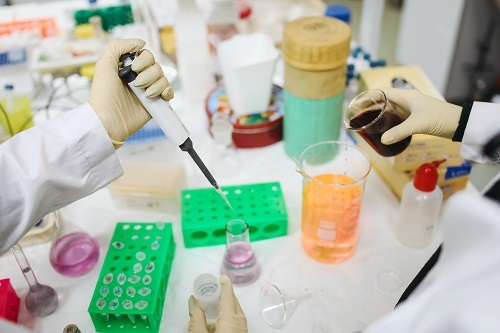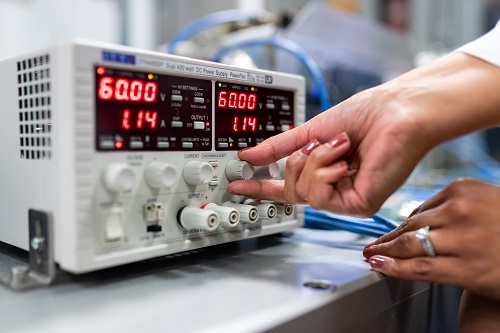Classifying In Vitro Diagnostic Medical Devices Under The MDR
May 26, 2022, marks the start of the 5-year staggered implementation of the In Vitro Diagnostic Medical Devices Regulation (IVDR, 2017/746). Unlike the In Vitro Diagnostic Directive (98/79/EC), the IVDR emphasizes continuous lifecycle management of in vitro diagnostic medical devices with a greater focus on post-market surveillance and the introduction of risk-based classification.
Under the IVDD, a classification system did not exist per se. Instead, the IVDD contained a list of critical markers of the conditions or pathogens the dev
ice was manufactured to treat, complicating things for IVDs meant to treat emerging pathogens or previously unknown medical conditions.
Under the IVDR, the classification of in vitro diagnostic medical devices is entirely based on risk, similar to the classification systems of Health Canada and the Australian Therapeutic Goods Administration (TGA).
In vitro diagnostic medical devices are defined in article 2 of the IVDR:
In vitro diagnostic medical device’ means any medical device which is a reagent, reagent product, calibrator, control material, kit, instrument, apparatus, piece of equipment, software, or system, whether used alone or in combination, intended by the manufacturer to be used in vitro for the examination of specimens, including blood and tissue donations, derived from the human body, solely or principally for the purpose of providing information on one or more of the following:
- (a) concerning a physiological or pathological process or state;
- (b) concerning congenital physical or mental impairments;
- (c) concerning the predisposition to a medical condition or a disease;
- (d) to determine the safety and compatibility with potential recipients;
- (e) to predict treatment response or reactions;
- (f) to define or monitoring therapeutic measures.
Specimen receptacles shall also be deemed to be in vitro diagnostic medical devices;

Why does the classification of my IVD medical devices matter?
Under the IVDD, most IVDs did not require conformity assessment by a notified body and were self-certified to CE marking by the manufacturer. With the implementation of the IVDR, the vast majority of IVDs will now require notified body review. In addition, only Class A non-sterile IVDs can be self-certified – Class B, Class C, and Class D IVDs need notified body involvement.
The update to the in vitro diagnostic regulation and the involvement of notified bodies in the conformity assessment of IVDs requires manufacturers to implement a Quality Management System (QMS) that complies with ISO 13485 and compile a technical file or design dossier for each IVD they are placing on the market.
Considering the lack of certified notified bodies for IVDs, we highly recommend starting a conformity assessment for your IVD with as much anticipation as possible, as the seven notified bodies currently certified will most likely not be able to keep up with the demand.

IVDR Classification System
The IVDR classification rules are based on the International Medical Device Regulators Forum (IMDRF) risk-based classification system. Extrapolating from the IMDRF risk classes, the IVDR divides devices into four classes:
- Class A: Low public health risks and personal risks, such as laboratory equipment and general culture media
- Class B: Low public health risk and low to moderate personal risk, such as self-test pregnancy tests, cholesterol tests, and urine test strips
- Class C: Moderate public health risk and high personal risk, such as self-test blood glucose measurements, human leukocyte antigen (HLA) typing, and prostate-specific antigen (PSA) screening
- Class D: High public health risks and personal risks, such as human immunodeficiency virus (HIV) blood diagnostics and Hepatitis B and C tests

Since IVDs are frequently used to treat conditions and pathogens that are dangerous to public health, such as SARS-CoV-2, the risk to public health is an important consideration for the classification of IVDs.
Annex VIII of the IVDR describes the classification rules to be applied to in vitro diagnostic devices. The implementation of the classification rules is based on the intended purpose of your IVD.
Classification Rules
Annex VIII of the IVDR describes the classification rules and their implementation. A few of the clauses described at the beginning of the annex are worth an extra look.
Article 1.2 mentions that if an IVD is intended to be used in combination with another, the classification rules apply separately to each device.
Article 1.3 mentions that accessories shall be classified in their own right, separately from their “main device”.
Article 1.4 mentions how stand-alone software (Software as a Medical Device, SaMD) should be classified in its own right and how software that drives or influences a device falls within the same classification as the device itself.

There are seven classification rules in total, and they are generally straightforward to interpret.
Rule 1
Devices for the detection of or exposure to life-threatening transmissible agents in human tissues, cells, and blood for transfusion or transplantations, and life-threatening transmissible agents that cause disease with a high risk of propagation, as well as devices for determining the infectious load of a life-threatening disease, are classified as Class D.
Rule 2
Devices intended to be used for blood grouping or tissue typing for transplantations or transfusions are classified as Class C, with some exceptions that are Class D.
Rule 3
Devices intended for:
- detecting the presence of, or exposure to sexually transmitted agents, and infectious agents in the cerebrospinal fluid or blood
- various screenings, such as prenatal screenings, cancer screening, and congenital disorders
- human genetic testing are classified as Class C.

Rule 4
Devices intended for self-testing are classified as class C, with exceptions such as pregnancy tests, cholesterol tests, and urine bacteria tests, among others, that are Class B.
Rule 5
Devices for general laboratory use, buffer solutions, and general culture media, among others, are classified as Class A.
Rule 6
Any devices not covered by the above are classified as Class B.
Rule 7
Controls without a quantitative or qualitative assigned value are classified as Class B.
Implications for IVD manufacturers
As mentioned previously, the IVDR requires in vitro diagnostic medical device companies to implement a Quality Management System (QMS) certified to ISO 13485.
The manufacturer must issue an EU declaration of conformity as described in Annex IV of the IVDR.
Furthermore, a vast majority of IVDs are now required to undergo notified body conformity assessment to obtain CE marking. Furthermore, the notified body will audit any manufacturer of Class B, C, and D IVDs to ensure compliance.

The classification of your in vitro diagnostic medical device affects your manufacturing, conformity, and clinical evidence requirements and can hinder the commercialization of your IVD if not done correctly. Hiring an external consultant is a good option if you are not confident with the new classification rules or need a second set of eyes on your initial classification research. They can help with understanding the terminology, correct interpretation of the regulation, and formulating a plan of action for the compliance of your product.
